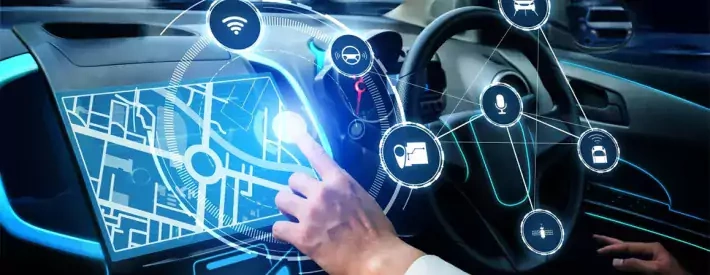Why ADAS branding needs urgent clarity

Advanced Driver Assistance Systems take the stress out of driving, but they can’t take full control and it’s important that message is delivered
The industry is going through some seismic shifts, and everyone needs to know what’s coming down the road. Advanced Driver Assistance Systems (ADAS) and the road to autonomous vehicles are an enormous part of where automotive is going.
The UK government is mulling which cars should be listed under Section 1 of the new Automated and Electric Vehicles Act, and with it, the branding of ADAS systems has come under renewed scrutiny.
Why’s branding important?
Unsurprisingly, the manufacturer receiving the most criticism is Tesla for its use of Autopilot and Full Self Driving terminology.
In 2019, a survey of more than 2,000 drivers by the Insurance Institute for Highway Safety in the US found that 6% thought it would be OK to go to sleep while using Autopilot, compared to 3% for brands including Audi’s Traffic Jam Assist and BMW’s Driving Assistant Plus.
Following a German competition commission ruling last year, Matthew Avery, Research Director at Thatcham, was scathing in his assessment. “We have long warned of the pitfalls,” he said. “Autopilot is not a self-driving system. It’s there to provide driver assistance, not become an invisible chauffeur. Naming is key, and Autopilot is an especially misleading term.”
Unfortunately, his advice was not heeded. Tesla hit the headlines again in April after a fatal crash in Texas involving a Model S reportedly in Autopilot mode.
What’s more, the internet is now awash with videos of less than sensible people climbing out of the driver’s seat while moving at speed. To highlight the dangers, Youtuber Jeremy Judkins contacted one such reckless Facebook poster.
“He got so many views, shares and likes… and the comment section is just full of so much bad information,” he explained. “The first thing he said is ‘this is what I purchased’ and he showed that he spent $8,000 on Full Self Driving capability.”
The bamboozlement isn’t helped by hyperbolic headlines, but it’s hard to blame the media when you have a Tesla engineer telling the Department of Motor Vehicles in California that CEO Elon Musk has “overstated the self-driving ability.”
Vehicle test engineer, Alex Sipes, worked for Uber Advanced Technologies Group in Phoenix and is now based in the UK.
“Any marketing term that implies someone else is driving is setting the expectation of the consumer too high,” he said. “You wind up with people using the car differently than it was designed for.
“ADAS is there to help you drive more safely and make driving less frustrating. I've used Autopilot on the freeway, and it does – it makes stop and go traffic a little less insufferable.
“There’s a lot of hype around Tesla, and you've got a strong fanboy community. Some of them can get quite riled up and say they definitely do drive themselves. My response is: you’re fooling yourself.”
Tara Andringa, Executive Director of Partners for Automated Vehicle Education, also decries the conflation of driver assistance and self-driving.
“We’ve found a lot of confusion about the technology that’s on the road today – from people who say self-driving cars will never happen to people who think their cars are already equipped to drive themselves,” she says. “We very much believe ADAS can improve safety, but we always emphasise that all cars for sale today require a responsible driver behind the wheel.”
What does the law say?
The rules around what is responsible are being rewritten. For example, Zenzic, the organisation dedicated to accelerating self-driving in the UK, is funding Thatcham to develop a consumer safety rating for automated driving, starting with Automated Lane Keeping Systems (ALKS).
As it stands, proposed changes to the Highway Code could soon make hands-off driving legal on UK roads in certain circumstances in automated vehicles, with ALKS-equipped cars potentially the first to meet the criteria.
We stand on the verge of a transport revolution, struggling to agree on the terminology to describe it. If it’s bewildering for automotive professionals, how must the public feel?
Peter Stoker, Chief Engineer for Connected and Autonomous Vehicles at Millbrook, puts it quite starkly: “At the moment, we’re making it harder to understand, not easier.”
The emphasis will undoubtedly be placed on the industry to make sure consumers understand the technologies that vehicles are equipped with, what they are capable of and their limitations. Hopefully, the Automated and Electric Vehicles Act will bring a little more clarity.




